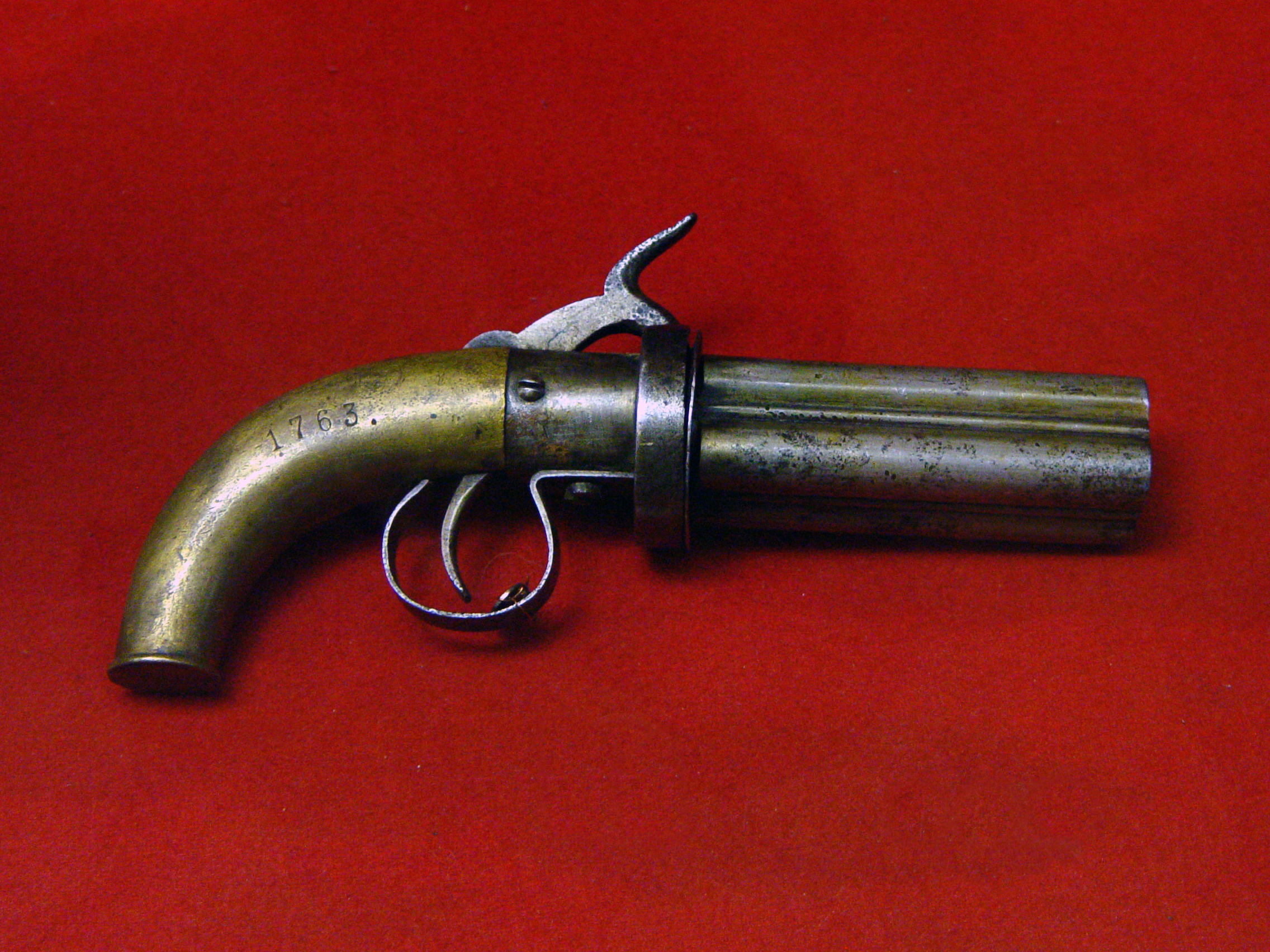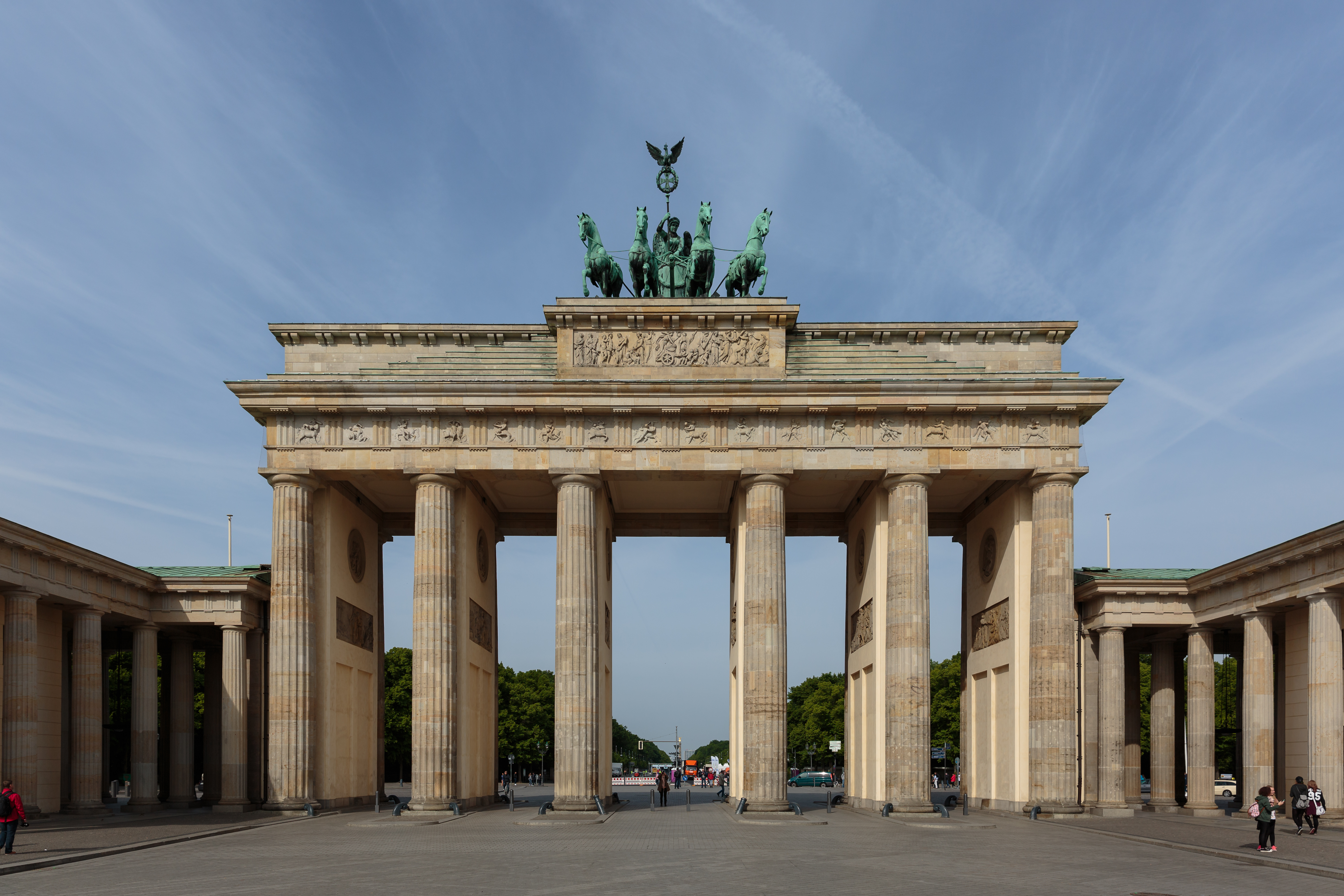|
Ethan Allen House And Gun Shop
The Ethan Allen House and Gun Shop is an historic property at 37 Waterville Street in Grafton, Massachusetts. The property includes the home and business of armsmaker Ethan Allen. The gun shop was constructed in 1833, while the house was built in 1834–36. Allen, the inventor of the pepper-box revolver, began manufacturing guns in Grafton in 1832; his business was one of the earliest gunmakers in the region and an early part of Grafton's industrial development. Allen's home was a Greek Revival residence, an uncommon style in the area. The property was added to the National Register of Historic Places in 1995. Ethan Allen (not to be confused with American Revolutionary War hero Ethan Allen), was a native of Bellingham, Massachusetts who came to Grafton in 1831, where he manufactured cutlery before entering the arms business. The land for the house and shop was acquired in partnership with his father in 1832, and purchased by him outright in 1837. When Allen began making g ... [...More Info...] [...Related Items...] OR: [Wikipedia] [Google] [Baidu] |
Grafton, Massachusetts
Grafton is a town in Worcester County, Massachusetts, United States. The population was 19,664 at the 2020 census. The town consists of the North Grafton, Grafton, and South Grafton geographic areas, each with a separate ZIP Code. Incorporated in 1735, the town is home to a Nipmuc village known as ''Hassanamisco'' Reservation, the Willard House and Clock Museum, Community Harvest Project, and the Tufts University Cummings School of Veterinary Medicine. Grafton operates the state's largest on-call fire department, with 74 members. History Bands of the Nipmuc tribe are the indigenous inhabitants, and maintain a state-recognized reservation known as Hassanamesit, or Hassanamisco, which was formerly a Praying Indian village from 1647 when the Reverend John Eliot came and converted the Hassanamiscos to Christianity . in 1727 the Hassanamesit reservation of 8,000 acres was divided into 7,500 acres to 40 English proprietors and 500 acres to 7 Nipmuc proprietors. This became Grafton, ... [...More Info...] [...Related Items...] OR: [Wikipedia] [Google] [Baidu] |
Ethan Allen (armsmaker)
Ethan Allen (September 2, 1808 – January 7, 1871) was a major American arms maker from Massachusetts. He is unrelated to the revolutionary Ethan Allen. His first firearm, the "Pocket rifle" was developed in 1836, and his first patent was granted in 1837. Early life Allen began his career as a cutlery maker in Milford, Massachusetts, in 1831. He gained the knowledge of metalworking and manufacturing processes by producing knives and shoemaking tools before moving his business to Grafton. While working on a cane gun for a doctor, Allen came up with the idea for an underhammer pocket rifle and designed it in 1836. The following year he applied for a patent for a "tube hammer" pocket pistol and went into business with his brother-in-law, Charles Thurber. Ethan proved to be a true family man, investing and partnering with a nephew in a New York sporting goods retailer, hiring another brother-in-law Thomas Wheelock who was eventually made a partner, and similarly hiring and later ... [...More Info...] [...Related Items...] OR: [Wikipedia] [Google] [Baidu] |
Pepper-box
The pepper-box revolver or simply pepperbox (also "pepper-pot", from its resemblance to the household pepper shakers) is a multiple-barrel firearm, mostly in the form of a handgun, that has three or more gun barrels in a coaxially revolving mechanism. Each barrel holds a single shot, and the shooter can manually rotate the whole barrel assembly to sequentially index each barrel into alignment with the lock or hammer, similar to rotation of a revolver's cylinder. Pepperbox guns have existed for all types of firelock firearms and metal cased ammunition systems used in breechloading firearms: matchlock, wheellock, flintlock, snaplock, caplock, pinfire, rimfire and centerfire. While they are usually sidearms, a few long guns were also made. For example, Samuel Colt owned a three-barrel pepperbox matchlock musket from British India, and an eight-barrel pepperbox shotgun was designed in 1967 but never went into production. Early years This type of firearm ... [...More Info...] [...Related Items...] OR: [Wikipedia] [Google] [Baidu] |
Greek Revival Architecture
The Greek Revival was an architectural movement which began in the middle of the 18th century but which particularly flourished in the late 18th and early 19th centuries, predominantly in northern Europe and the United States and Canada, but also in Greece itself following independence in 1832. It revived many aspects of the forms and styles of ancient Greek architecture, in particular the Greek temple, with varying degrees of thoroughness and consistency. A product of Hellenism, it may be looked upon as the last phase in the development of Neoclassical architecture, which had for long mainly drawn from Roman architecture. The term was first used by Charles Robert Cockerell in a lecture he gave as Professor of Architecture to the Royal Academy of Arts, London in 1842. With a newfound access to Greece and Turkey, or initially to the books produced by the few who had visited the sites, archaeologist-architects of the period studied the Doric and Ionic orders. Despite its ... [...More Info...] [...Related Items...] OR: [Wikipedia] [Google] [Baidu] |
National Register Of Historic Places
The National Register of Historic Places (NRHP) is the United States federal government's official list of districts, sites, buildings, structures and objects deemed worthy of preservation for their historical significance or "great artistic value". A property listed in the National Register, or located within a National Register Historic District, may qualify for tax incentives derived from the total value of expenses incurred in preserving the property. The passage of the National Historic Preservation Act (NHPA) in 1966 established the National Register and the process for adding properties to it. Of the more than one and a half million properties on the National Register, 95,000 are listed individually. The remainder are contributing resources within historic districts. For most of its history, the National Register has been administered by the National Park Service (NPS), an agency within the U.S. Department of the Interior. Its goals are to help property owners a ... [...More Info...] [...Related Items...] OR: [Wikipedia] [Google] [Baidu] |
American Revolutionary War
The American Revolutionary War (April 19, 1775 – September 3, 1783), also known as the Revolutionary War or American War of Independence, was a major war of the American Revolution. Widely considered as the war that secured the independence of the United States, fighting began on April 19, 1775, followed by the Lee Resolution on July 2, 1776, and the Declaration of Independence on July 4, 1776. The American Patriots were supported by the Kingdom of France and, to a lesser extent, the Dutch Republic and the Spanish Empire, in a conflict taking place in North America, the Caribbean, and the Atlantic Ocean. Established by royal charter in the 17th and 18th centuries, the American colonies were largely autonomous in domestic affairs and commercially prosperous, trading with Britain and its Caribbean colonies, as well as other European powers via their Caribbean entrepôts. After British victory over the French in the Seven Years' War in 1763, tensions between the motherla ... [...More Info...] [...Related Items...] OR: [Wikipedia] [Google] [Baidu] |
Ethan Allen
Ethan Allen ( – February 12, 1789) was an American farmer, businessman, land speculator, philosopher, writer, lay theologian, American Revolutionary War patriot, and politician. He is best known as one of the founders of Vermont and for the capture of Fort Ticonderoga early in the Revolutionary War. He was the brother of Ira Allen and the father of Frances Allen. Allen was born in rural Connecticut and had a frontier upbringing, but he also received an education that included some philosophical teachings. In the late 1760s, he became interested in the New Hampshire Grants, buying land there and becoming embroiled in the legal disputes surrounding the territory. Legal setbacks led to the formation of the Green Mountain Boys, whom Allen led in a campaign of intimidation and property destruction to drive New York settlers from the Grants. He and the Green Mountain Boys seized the initiative early in the Revolutionary War and captured Fort Ticonderoga in May 1775. In Sep ... [...More Info...] [...Related Items...] OR: [Wikipedia] [Google] [Baidu] |
Bellingham, Massachusetts
Bellingham () is a town in Norfolk County, Massachusetts, United States. The population was 16,945 at the 2020 census. The town sits on the southwestern fringe of Metropolitan Boston, along the rapidly growing "outer belt" that is Route 495. It is formally a part of the Boston–Cambridge–Quincy metropolitan statistical area, as well as the Providence metropolitan area. For geographic and demographic information on the census-designated place Bellingham, please see the article Bellingham (CDP), Massachusetts. History The area of the town south of the Charles River constituted the southwestern corner of the Dedham Grant, which sprouted much of what has become Norfolk County. The land was swampy, and the town of Dedham did not believe it worthy of settlement. The area north of the river would be purchased by Edward Rawson, and due to the settlement of borders with the surrounding communities, these two areas would eventually merge. Most of the land to be called Bellingham was ... [...More Info...] [...Related Items...] OR: [Wikipedia] [Google] [Baidu] |
Cutlery
Cutlery (also referred to as silverware, flatware, or tableware), includes any hand implement used in preparing, serving, and especially eating food in Western culture. A person who makes or sells cutlery is called a cutler. The city of Sheffield in England has been famous for the production of cutlery since the 17th century and a train – the ''Master Cutler'' – running from Sheffield to London was named after the industry. Bringing affordable cutlery to the masses, stainless steel was developed in Sheffield in the early 20th century. The major items of cutlery in Western culture are the knife, fork and spoon. These three implements first appeared together on tables in Britain in the Georgian era. In recent times, hybrid versions of cutlery have been made combining the functionality of different eating implements, including the spork (''sp''oon / f''ork''), spife (''sp''oon / kn''ife''), and knork (''kn''ife / f''ork''). The sporf or splade combines all three. Etym ... [...More Info...] [...Related Items...] OR: [Wikipedia] [Google] [Baidu] |
Norwich, Connecticut
Norwich ( ) (also called "The Rose of New England") is a city in New London County, Connecticut New London County is in the southeastern corner of Connecticut and comprises the Norwich-New London, Connecticut Metropolitan Statistical Area, which is also included in the Hartford-East Hartford, Connecticut Combined Statistical Area. There i ..., United States. The Yantic River, Yantic, Shetucket River, Shetucket, and Quinebaug Rivers flow into the city and form its harbor, from which the Thames River (Connecticut), Thames River flows south to Long Island Sound. The population was 40,125 at the 2020 United States Census. History The town of Norwich was founded on the site of what is now Norwichtown in 1659 by settlers from Saybrook Colony led by Major John Mason (c. 1600–1672), John Mason and James Fitch (minister), James Fitch. They purchased the land "nine miles square" that became Norwich from Mohegan Sachem Uncas. One of the co-founders of Norwich was Thomas Leffingwell w ... [...More Info...] [...Related Items...] OR: [Wikipedia] [Google] [Baidu] |
National Register Of Historic Places Listings In Worcester County, Massachusetts
__NOTOC__ This is a list of the National Register of Historic Places (NRHP) designated in Worcester County, Massachusetts. The locations of NRHP properties and districts for which the latitude and longitude coordinates are included below, may be seen in a map. Cities and towns listed separately The following Worcester County cities and towns have large numbers of sites listed in the National Register of Historic Places. Lists of their sites are on separate pages, linked below. Other cities and towns in central and southern Worcester County Former listing References {{National Register of Historic Places in Massachusetts Buildings and structures in Worcester County, Massachusetts Worcester Worcester may refer to: Places United Kingdom * Worcester, England, a city and the county ... [...More Info...] [...Related Items...] OR: [Wikipedia] [Google] [Baidu] |
Industrial Buildings And Structures On The National Register Of Historic Places In Massachusetts
Industrial may refer to: Industry * Industrial archaeology, the study of the history of the industry * Industrial engineering, engineering dealing with the optimization of complex industrial processes or systems * Industrial city, a city dominated by one or more industries * Industrial loan company, a financial institution in the United States that lends money, and may be owned by non-financial institutions * Industrial organization, a field that builds on the theory of the firm by examining the structure and boundaries between firms and markets * Industrial Revolution, the development of industry in the 18th and 19th centuries * Industrial society, a society that has undergone industrialization * Industrial technology, a broad field that includes designing, building, optimizing, managing and operating industrial equipment, and predesignated as acceptable for industrial uses, like factories * Industrial video, a video that targets “industry” as its primary audience * Indus ... [...More Info...] [...Related Items...] OR: [Wikipedia] [Google] [Baidu] |







